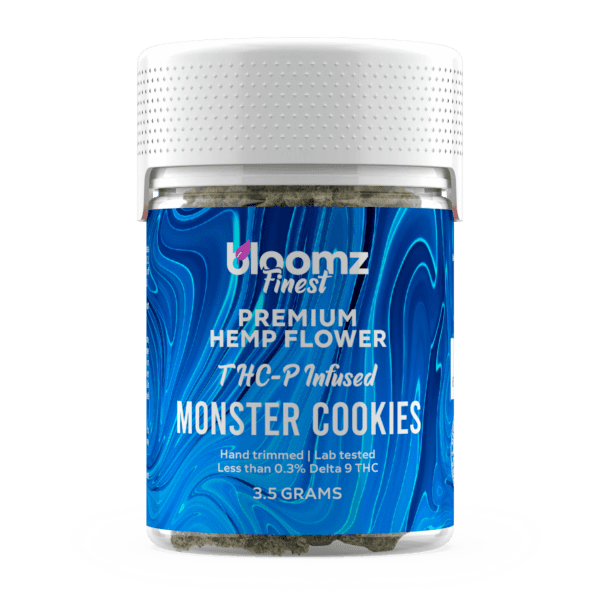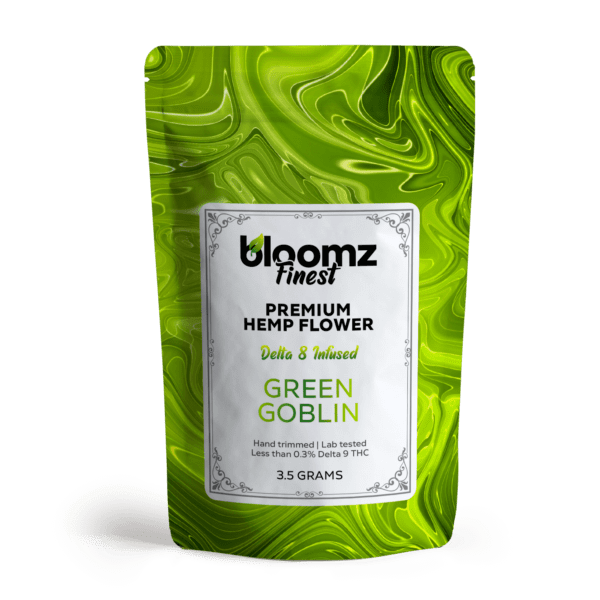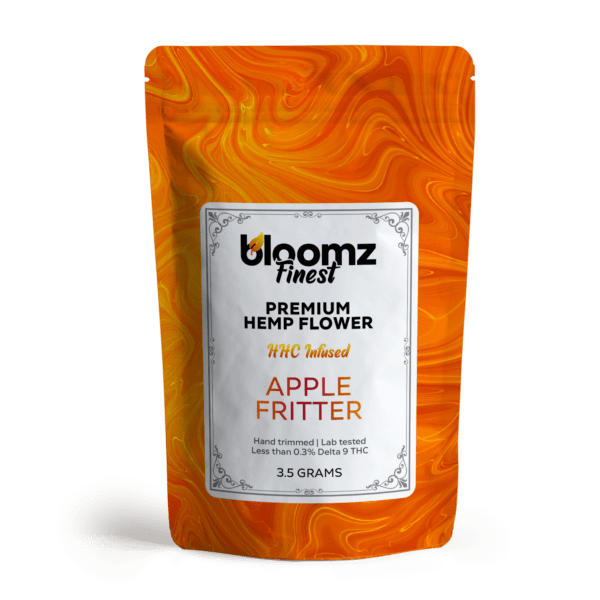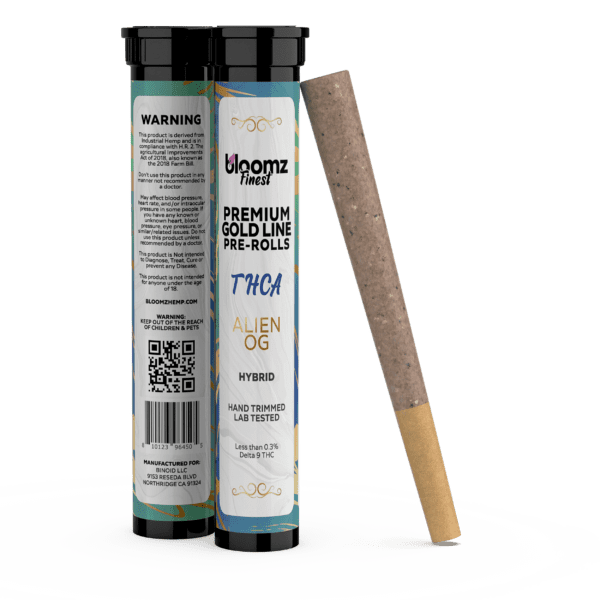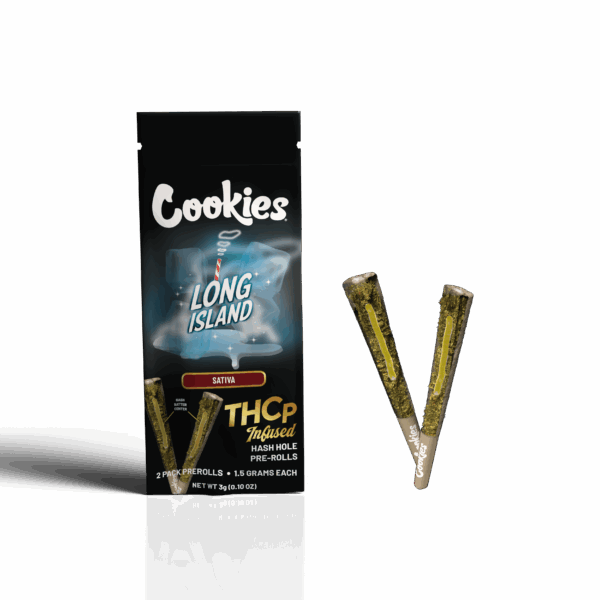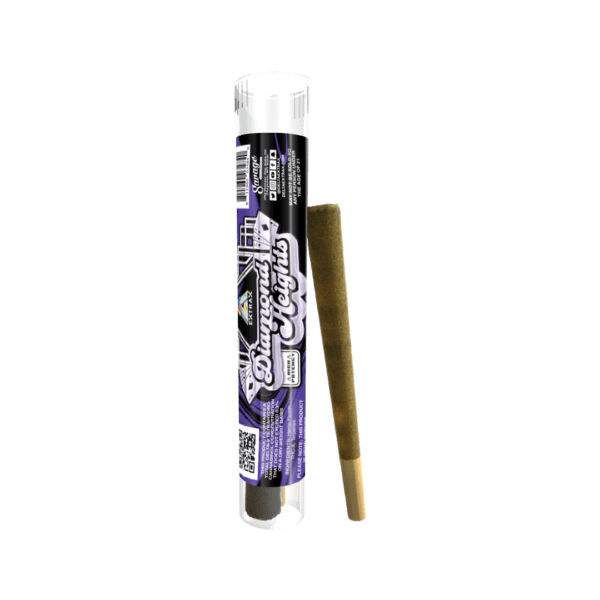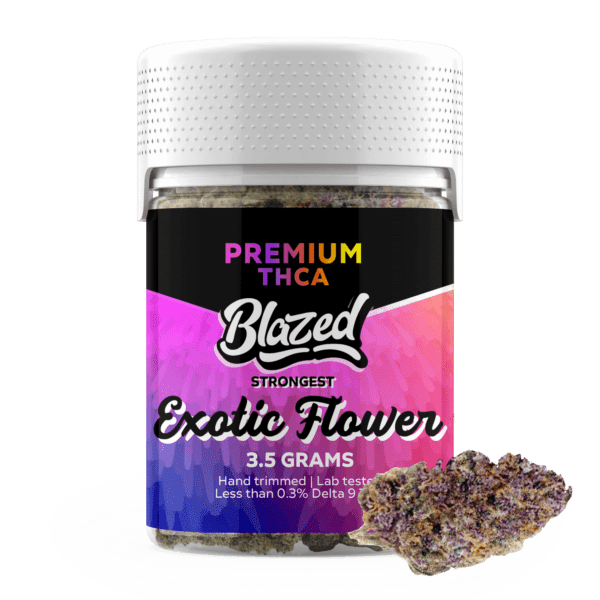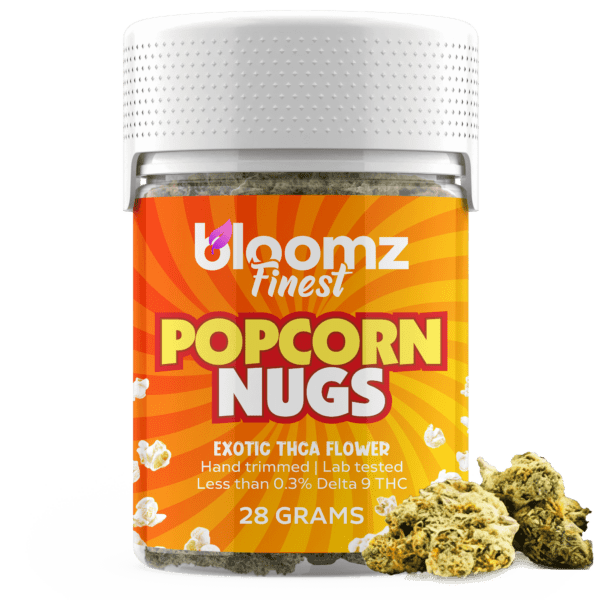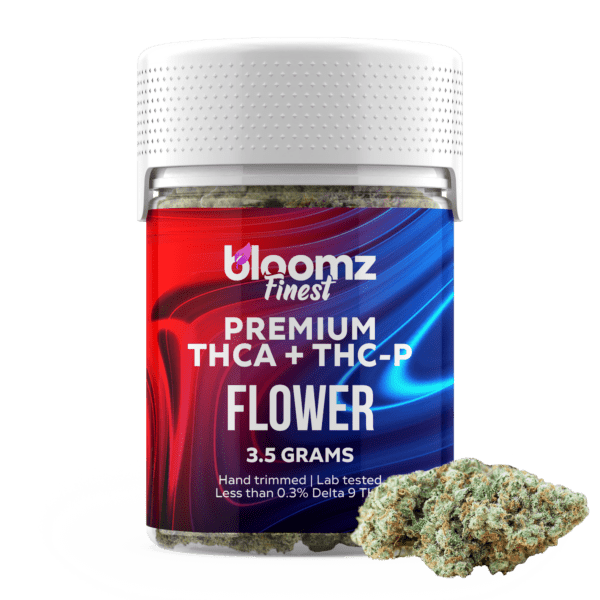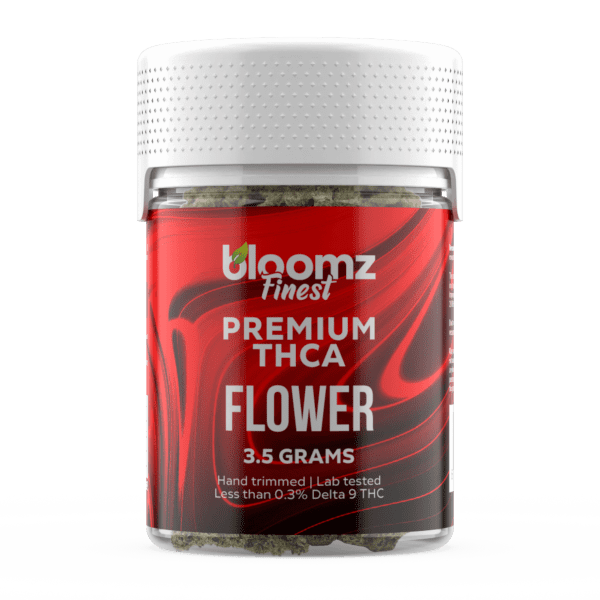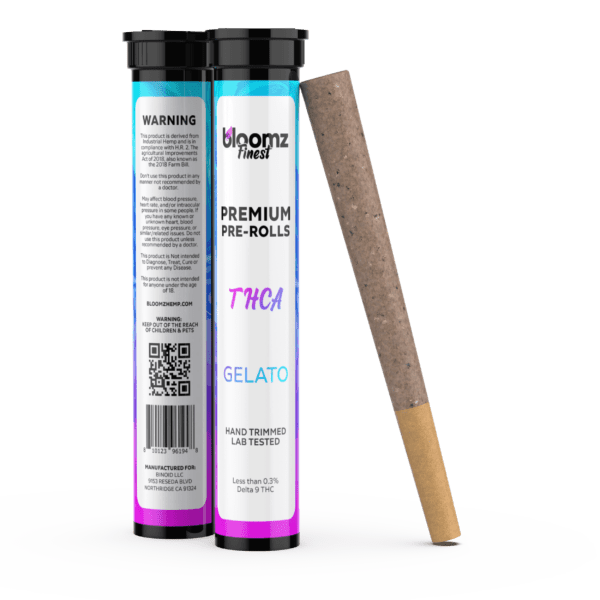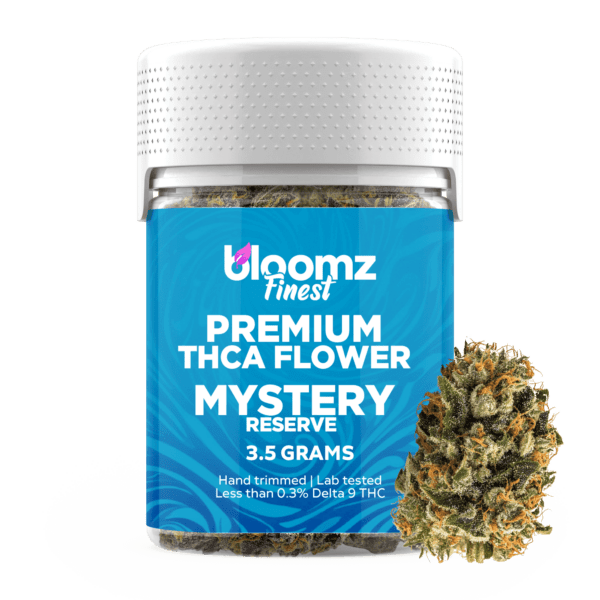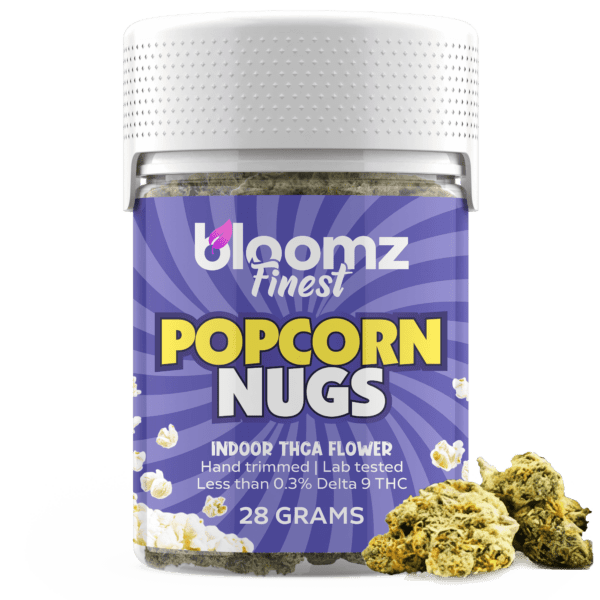In the vast and varied landscape of botanicals that alter mood and perception, two titans stand in stark, compelling contrast. From the cutting edge of modern science comes THC-P flower, a product that represents the very frontier of cannabinoid discovery. It is a testament to human curiosity, a carefully crafted substance that promises an experience of unparalleled intensity, challenging the very limits of what we know about the cannabis plant.
From the ancient, fertile soils of the Pacific Islands comes Kava, a humble root with a tremendous history of weaving communities together and ushering in a state of profound, clear-headed calm. This is a matchup that pits the explosive power of a newly understood molecule against the enduring, gentle wisdom of a sacred tradition. It’s a choice between a journey to the outer limits of consciousness and a path to the serene center of your being.
TO BUY THC-P FLOWER CLICK HERE
Recommended products
Why It’s Important to Breakdown the Matchup of THC-P Flower vs. Kava
To place THC-P flower and Kava side-by-side is to create a study in contrasts, highlighting the incredible diversity of experiences that the botanical world can offer. A detailed breakdown of this particular matchup is more than just an interesting comparison; it is a crucial guide for anyone navigating the complex modern market of psychoactive and relaxing substances. The chasm between the gentle, lucid tranquility offered by Kava and the overwhelmingly potent psychoactivity of THC-P is immense. Understanding this difference is paramount for making a responsible, safe, and ultimately satisfying choice that aligns with one’s personal experience level, intentions, and desired state of mind. Without this clarity, a user could easily choose a path that is wildly divergent from their destination.
This in-depth analysis serves to empower the consumer by drawing sharp lines around the most critical points of differentiation, ensuring a fully informed decision-making process:
-
The Immense Gulf in Potency and Effect: This is the most vital distinction. THC-P is a cannabinoid of extraordinary strength, with a binding affinity to brain receptors that dwarfs even traditional Delta 9 THC, leading to an exceptionally intense and long-lasting high. Kava, by contrast, is not psychoactive in this way; it produces deep relaxation while preserving mental clarity. Understanding that one is an experience of extreme intensity and the other of serene lucidity is the primary takeaway.
-
Manufactured Innovation vs. Natural Tradition: “THC-P flower” is a modern invention—a hemp flower that has been scientifically infused with a semi-synthetic, lab-created cannabinoid. Kava is a traditional, agricultural product—a plant root that is simply harvested, dried, and prepared. This distinction between a high-tech, processed product and a raw, natural botanical is fundamental to their character and the philosophy behind their use.
-
Divergent Cultural and Social Contexts: Kava is intrinsically a social substance, a cornerstone of community, ceremony, and communication in Pacific Islander cultures for millennia. THC-P is a product of the individualistic, recreational cannabis market, often consumed for personal introspection or intense recreation. Their social applications and cultural histories could not be more different, shaping the setting in which each is best enjoyed.
-
Navigating Safety and Legality: Both substances require a high degree of consumer diligence. THC-P exists in a precarious legal gray area and, due to its novelty and the chemical processes involved in its creation, comes with significant questions about purity and long-term safety. Kava is broadly legal but requires careful sourcing to ensure one is consuming safe, “noble” varieties and not inferior or potentially harmful ones. A clear comparison highlights these distinct but equally important safety considerations.
Contender #1: THC-P Flower
Stepping into the ring as our first contender is THC-P flower, a true heavyweight and one of the most recent and awe-inspiring discoveries in the world of cannabis science. This is not a cannabinoid for the faint of heart or the inexperienced user; it represents the current summit of potency in the hemp-derived market. THC-P flower is the answer to the question, “What lies beyond the familiar?” It has captivated the attention of cannabis connoisseurs and thrill-seekers who have built up a significant tolerance to other cannabinoids and are seeking a new frontier of profound euphoria and relaxation. The story of THC-P flower is a narrative of scientific breakthrough, a product that pushes the very limits of what we believed a cannabinoid could do, offering an experience that is as intense as it is novel.
Tetrahydrocannabiphorol (THC-P) is a phytocannabinoid that was only officially discovered and isolated in late 2019 by a team of Italian researchers. While it does occur naturally in some cannabis varieties, it is only present in extremely low concentrations, making it impossible to extract for commercial use. The groundbreaking discovery was not just the identification of a new cannabinoid, but the understanding of its unique molecular structure. THC-P is a close relative of Delta 9 THC, but with one critical difference: it possesses a longer alkyl side chain.
While Delta 9 THC has a five-carbon atom chain, THC-P has a seven-carbon atom chain. This seemingly small structural difference has massive implications. Scientific research suggests that this longer chain allows THC-P to bind to the CB1 receptors in the human brain with an affinity that’s over 30x stronger than that of Delta 9 THC. This extraordinary binding affinity is the theoretical basis for its formidable and widely reported psychoactive potency. The THC-P found in consumer products is created via a complex chemical conversion of hemp-derived CBD.
Given that THC-P isn’t naturally abundant, the concept of a “THC-P flower” is similar to that of Delta 8 flower—it is a manufactured, infused product. The process begins not with a plant that grows THC-P, but with a standard, high-quality hemp flower that is rich in CBD or CBG. This beautiful, terpene-rich hemp bud serves as the delivery mechanism for the star of the show. The extraordinarily potent THC-P, which exists as a thick distillate oil after its laboratory conversion from CBD, is then carefully applied to the exterior of the hemp flower.
Recommended products
This creates a final product that has the appearance, aroma, and consumption methods of traditional cannabis, but with effects that are supercharged to an entirely new level. Basically, the creation of THC-P flower is a sophisticated, multi-stage process:
-
Cultivation of the Base Flower: The foundation of any good THC-P flower is a premium hemp flower. Expert cultivators grow specific strains of CBD or CBG hemp, often in controlled indoor environments, to maximize terpene production and create dense, aesthetically pleasing buds.
-
Harvesting and Curing: The mature hemp plants are carefully harvested, trimmed, and then slowly dried and cured. This curing process is essential for developing the flower’s final aroma and flavor profile and ensuring a smooth smoking or vaping experience.
-
Extraction and Conversion to THC-P: In a highly specialized laboratory setting, CBD is extracted from industrial hemp. This CBD is then put through a series of chemical reactions to transform its molecular structure into the desired THC-P molecule. This is a complex and precise process that requires advanced chemical knowledge to perform safely and yield a pure end product.
-
Precise Infusion: Because THC-P is so potent, the infusion process must be done with extreme care. The THC-P distillate, which is often blended with other less potent distillates like Delta 8 to create a more manageable experience, is evenly and lightly applied to the cured hemp flower. The goal is to create a consistent product without oversaturating the buds.
-
Comprehensive Safety Testing: For any reputable brand, the final step is rigorous testing by an accredited third-party lab. This Certificate of Analysis (COA) is critical, as it not only verifies the potency of THC-P and other cannabinoids but must also screen for any residual solvents, heavy metals, or harmful byproducts from the chemical synthesis process.
The market for THC-P flower, while newer and more niche than that for other cannabinoids, offers several product types for consumers. These categories generally refer to the quality of the base hemp flower and the final form of the infused product. Given the extreme potency of THC-P, these products are designed for experienced users and are often positioned as premium, top-shelf offerings within a brand’s lineup. The focus is on delivering a powerful and effective experience, from standard infused buds to ultra-potent specialty items and convenient pre-rolled options:
-
Indoor THC-P Flower: This represents the highest quality available. It uses premium, indoor-grown CBD or CBG hemp as its base. This flower is known for its impeccable appearance, high terpene content, and dense structure. When infused with THC-P, it creates a connoisseur-grade product that offers the best in terms of flavor, smoothness, and a powerful, nuanced experience.
-
Outdoor THC-P Flower: A more budget-conscious option, this type uses sun-grown hemp flower as its foundation. While still effective, the base flower may be less dense and visually perfect than its indoor counterpart. This allows for a more affordable final product for users who are focused primarily on experiencing the unique and powerful effects of the THC-P itself.
-
THC-P Nugs: This is the standard form of THC-P flower, referring to full-sized buds of hemp that have been carefully infused with THC-P distillate. These nugs are what consumers typically purchase when buying the flower in jars or bags, offering a classic cannabis experience in terms of handling and preparation.
-
THC-P Moonrocks: For those seeking the absolute maximum potency, THC-P moonrocks are the ultimate product. These are created in a multi-step process, typically starting with a hemp nug, coating it in a sticky distillate (often a blend of Delta 8 and THC-P), and then rolling the entire creation in a thick layer of CBD or CBG kief. The resulting product is incredibly dense, heavy, and phenomenally potent, demanding respect and extremely cautious use.
-
THC-P Pre-Rolls, Blunts & Joints: Offering convenience and a controlled dose, THC-P pre-rolls are an excellent way to experience this potent cannabinoid without the need for any grinding or rolling. The infused flower is expertly packed into papers or hemp wraps. These are often blended with a higher ratio of regular CBD flower to make the experience more manageable and are a good starting point for those new to THC-P.
The strain names associated with THC-P flower—such as Northern Lights, Sour Tangie, or Wedding Cake—refer to the genetic strain of the base hemp flower used in the product. This underlying strain provides its unique fingerprint of terpenes, which in turn dictates the product’s aroma and flavor profile. While the overwhelmingly powerful effects of the THC-P molecule will be the dominant feature of the experience, the terpenes can still provide subtle nuances and direction. This synergy between the base strain’s character and the intense power of the infused cannabinoid is what creates the final, complex user experience:
-
Indica: When an Indica-dominant hemp strain is used as the base, the goal is to create an experience of profound and immersive relaxation. The characteristic terpenes of Indica strains, known for their earthy and sweet notes, are thought to contribute calming qualities. This pairs synergistically with the intense body high that THC-P can produce, resulting in a product that is best suited for deep relaxation, quiet evenings, and achieving a state of blissful, “chilled out” tranquility.
-
Sativa: Using a Sativa-dominant hemp strain as the base aims to provide a more uplifting and cerebrally expansive experience. The bright, citrusy, and piney terpenes common in Sativa strains are believed to add an energetic and euphoric quality. When combined with the powerful psychoactive effects of THC-P, this can lead to an incredibly creative, euphoric, and mind-bending journey, making it a choice for experienced users during daytime or for engaging with art and music on a deeper level.
-
Hybrid: A Hybrid hemp strain provides a balanced foundation for the intensity of THC-P. By blending the genetics of Indica and Sativa, these strains can offer a nuanced experience that is both relaxing and euphoric without leaning too heavily in one direction. A Hybrid THC-P flower might provide a powerful wave of blissful feelings that permeates both mind and body, making it a versatile if still incredibly potent choice for various recreational settings.
The legal status of THC-P flower in the United States is highly complex and exists in a precarious gray area. The argument for its legality is rooted in the 2018 Farm Bill, which legalized hemp and its derivatives so long as they contain less than 0.3% Delta 9 THC. Since THC-P is a different cannabinoid from Delta 9 THC and is derived from legal hemp, manufacturers operate under the premise that it is a federally compliant hemp product. However, this position is fraught with challenges. The Drug Enforcement Administration’s (DEA) Interim Final Rule has suggested that all “synthetically derived tetrahydrocannabinols” are illegal, and since THC-P is created in a lab via chemical conversion, it could fall under this definition.
Furthermore, its extreme potency has made it a significant concern for state regulators, and many states that have banned Delta 8 THC have extended those bans to include other novel, psychoactive cannabinoids like THC-P. Therefore, its legality is not guaranteed and is subject to a patchwork of state-level laws, requiring consumers to be extremely diligent in verifying the laws in their specific location.
Recommended products
Given its extraordinary potency, the purposes for using THC-P flower are centered on achieving a powerful and profound psychoactive experience. The methods of consumption are identical to those for other cannabis flowers, but the approach to dosing must be radically different. Caution is the guiding principle, and even seasoned cannabis veterans are strongly advised to start with the smallest possible amount to gauge their individual reaction. A single puff of a THC-P pre-roll or a tiny piece of a bud may be more than sufficient to produce strong effects:
-
Vaping (using a portable or desktop vaporizer): Vaping is an excellent method for consuming THC-P flower as it allows for a degree of temperature control and provides a smoother, more flavorful experience that highlights the terpenes of the base flower. It also makes it slightly easier to microdose, as a user can take a very small, short inhalation and wait to assess the effects before proceeding, which is a highly recommended practice with this cannabinoid.
-
Smoking: Smoking THC-P flower in a pipe, bong, or joint is a highly effective and rapid delivery method, with effects setting in almost instantly. This is the most traditional way to consume flower, but it also makes it very easy to consume too much too quickly. Users should treat a THC-P joint with immense respect, taking only one small puff and waiting at least 20-30 minutes before considering another.
-
Cooking/Baking: Using THC-P flower to make edibles is possible but should only be attempted by the most experienced users with a very high tolerance and a deep understanding of cannabinoid cooking. The potency of THC-P is amplified in edible form, and the effects are extremely long-lasting. Dosing would need to be done with microscopic precision to avoid an uncomfortably intense and prolonged experience. This method carries the highest risk and requires the most caution.
THC-P flower’s overall effects are almost universally described as a significantly intensified and prolonged version of the Delta 9 THC experience. Due to its powerful affinity for the CB1 receptors, users can expect a rapid onset of an incredibly strong psychoactive journey. This often includes an overwhelming sense of euphoria and bliss, a profound and heavy body sensation that can be deeply relaxing, and significant alterations in sensory perception, where colors, sounds, and textures may seem more vivid and intense.
Many users also report a more psychedelic or mentally expansive quality to the experience compared to traditional THC. One of the most notable characteristics is the duration; the effects of THC-P are known to last much longer than those of other cannabinoids, sometimes for many hours. It is an immersive, powerful, and all-encompassing experience that’s once again, strictly for advanced users who are prepared for a new level of intensity.
Pros & Cons
The arrival of a cannabinoid as powerful as THC-P brings with it a very distinct and polarized set of pros and cons. Its advantages are almost entirely centered on its unprecedented potency and the unique experience it offers. Conversely, its drawbacks are also directly tied to this same potency, as well as its novelty and uncertain legal standing. A clear-eyed evaluation of these points is crucial before venturing into this high-intensity territory.
Pros:
-
Unparalleled Potency: The most obvious advantage of THC-P is its sheer strength. For experienced cannabis users with a very high tolerance, THC-P offers a way to achieve profound effects that other cannabinoids may no longer provide. It breaks through tolerance ceilings, delivering a powerful and effective experience that is second to none in the hemp-derived market.
-
A Novel and Unique Experience: As a recently discovered cannabinoid, THC-P provides a new and different kind of psychoactive journey. Many users describe it as being more nuanced or having a different character than traditional THC, sometimes with more mentally expansive qualities. For connoisseurs who have explored the cannabis spectrum extensively, it offers a genuinely new frontier to discover.
-
Requires Only a Very Small Amount: Because it is so potent, a very small amount of THC-P flower is needed to produce strong effects. A single product can last a user a very long time, as a dose might be a fraction of what one would normally consume. This efficiency can make it a cost-effective choice in the long run for high-tolerance users.
-
Extremely Long-Lasting Effects: The experience from THC-P is known for its remarkable duration, with effects that can last for many hours. For users seeking a prolonged period of deep relaxation or euphoria, this is a significant benefit. It allows for an extended session from a single dose, making it suitable for a day dedicated to leisure or creative pursuits.
-
The Federal Legality Argument: Like other hemp-derived cannabinoids, THC-P’s existence in the market is based on the 2018 Farm Bill. This legal argument, though highly contested, provides the basis for its sale and allows for its availability online and in shops in states that have not explicitly banned it, offering access where state-legal marijuana is not an option.
-
Accessibility in Non-Banned States: In jurisdictions where it remains legal, THC-P flower products are readily accessible through a variety of online retailers. This allows curious and experienced consumers in many parts of the country to legally purchase and explore this novel cannabinoid from the convenience of their homes, something unimaginable just a few years ago.
-
Synergy with the Base Flower: The fact that THC-P is infused onto a terpene-rich hemp flower means the user gets a complex, full-spectrum experience. The unique aroma and flavor from the base strain’s terpenes can complement and add nuance to the powerful effects of the THC-P. This synergy creates a more well-rounded and aromatic experience than consuming a pure distillate.
-
Profound Euphoria and Relaxation: For those prepared for its intensity, THC-P can deliver a state of bliss and relaxation that is truly profound. Users often report an overwhelming sense of well-being, a melting away of physical tension, and a powerful, happy euphoria. It is highly effective at producing the deeply “chilled out” state that many recreational users seek.
-
Pushes Cannabinoid Science Forward: The discovery and synthesis of THC-P represent a significant step forward in our understanding of the cannabis plant and its constituents. Its existence encourages further research into how the structure of a cannabinoid affects its interaction with the human body, paving the way for future discoveries and a deeper appreciation of the plant’s complexity.
-
Variety of Infused Strain Options: The infusion process allows for a wide array of choices. Consumers can select THC-P flower that uses their favorite Indica, Sativa, or Hybrid hemp strains as a base. This allows for a degree of customization, enabling users to pair the intense effects of THC-P with the terpene profiles they already know and love.
Cons:
-
Extreme Potency Can Be Overwhelming: The greatest strength of THC-P is also its most significant risk. Its incredible potency can easily be too much for most users, leading to an uncomfortable, anxious, or paranoid experience. The risk of “greening out” is substantially higher, and for those who are not prepared, the intensity can be deeply unpleasant and unsettling.
-
Highly Uncertain and Risky Legal Status: THC-P exists in a very precarious legal gray area. Its semi-synthetic nature and extreme psychoactivity make it a prime target for state and federal bans. Purchasing or possessing it carries a significant legal risk, as laws can change rapidly, and its status under the DEA’s interpretation of the law remains a serious, unresolved issue.
-
Significant Lack of Research and Safety Data: As a very new discovery, there is an almost complete lack of long-term research on THC-P and its effects on the human body. While it is structurally similar to THC, its long-term safety profile is completely unknown. Users are essentially venturing into uncharted territory, and the potential for unknown health risks cannot be discounted.
-
A Heavily Processed, Infused Product: For those who value natural, whole-plant products, THC-P flower falls short. It is a hemp flower that has been augmented with a cannabinoid created through a complex chemical process in a laboratory. This high degree of processing and its semi-synthetic origin can be a major drawback for purists and those who prefer to consume botanicals in a more natural state.
Recommended products
-
Exotic THCA Pre-Rolls Gold Line – 3-Pack/6 Pack
$36.99$69.99 -
THC-P HashHole Pre-Rolls – Cookies
$19.99$24.99 -
THCA Pre-Rolls with THCA Diamonds – Cookies
$17.99$21.90 -
THCA Pre-Rolls | Diamond Heights – Extrax
$17.99$23.99
Contender #2: Kava
Our second contender, Kava, invites us on a journey to the tranquil, emerald islands of the South Pacific. Known to botanists as Piper methysticum, which translates to “intoxicating pepper,” this remarkable plant is not a fleeting trend but an ancient tradition, deeply rooted in the cultures of Oceania for millennia. Unlike cannabis, where the flower is prized, the power of Kava resides in its root system. For thousands of years, the people of Vanuatu, Fiji, Tonga, and Hawaii have prepared these roots into a ceremonial beverage that fosters communication, eases tensions, and strengthens community bonds. Kava enters the modern botanical arena not as a product of legal maneuvering, but as a cultural ambassador, offering a unique form of profound relaxation that stands in stark contrast to the psychoactivity of THC-P flower.
At its core, Kava is a tropical shrub belonging to the pepper family, a relative of the common black pepper that seasons our food. The magic of the plant is concentrated in its roots, which contain a unique class of active compounds known as kavalactones. There are at least 18 different kavalactones that have been identified, with six of them—including kavain, dihydrokavain, and methysticin—being responsible for the majority of Kava’s signature effects. These compounds work in a complex synergy to produce a sense of calm, muscle relaxation, and well-being.
They are believed to interact with various neurotransmitter systems in the brain, including GABA pathways, in a way that quiets mental chatter and soothes the body. Critically, it is important to distinguish between “noble” and “tudei” Kava. Noble Kava varieties are those that have been cultivated over centuries for daily consumption, producing desirable effects with minimal negative side effects. Tudei (“two-day”) Kava is a wilder, more potent variety that is not traditionally consumed and is associated with more unpleasant, long-lasting effects. The global standard for quality and safety is to use only the roots of noble Kava.
The story of Kava is an epic that begins approximately 3,000 years ago in the volcanic archipelago of Vanuatu, which is widely considered to be its place of origin. From there, ancient seafaring Polynesians and Micronesians carried this sacred plant with them on their incredible voyages across the vast Pacific, introducing it to islands like Fiji, Samoa, Tonga, and Hawaii. In these societies, Kava—known as ‘awa in Hawaii and ‘ava in Samoa—became far more than just a relaxing beverage; it became the very heart of their social and spiritual lives. It was, and still is, prepared and consumed in solemn ceremonies to welcome honored guests, to negotiate treaties and resolve conflicts between villages, to inaugurate new chiefs, and to connect with the ancestral world.
The preparation itself is a ritual, traditionally involving the grinding or pounding of the root and mixing it with water. The communal drinking from a shared bowl, or tanoa, reinforces bonds of kinship and hospitality. European explorers, such as Captain James Cook in the 18th century, were among the first Westerners to document this profound tradition. Only in the last few decades has Kava journeyed beyond the Pacific, finding a new home in the West, most notably through the recent emergence of dedicated Kava bars that seek to replicate the plant’s communal and relaxing spirit.
Just as cannabis is known by its strains, Kava is distinguished by its geographical origin and the specific cultivars, or varieties, grown in those regions. The unique combination of a region’s volcanic soil, climate, and centuries of cultivation practices imparts a distinct character and kavalactone profile to the root. This results in Kavas that can have noticeably different effects, with some being more uplifting and cerebral (“heady”) and others being more profoundly relaxing and sedating (“heavy”). Exploring these regional varieties is a key part of the Kava journey, allowing enthusiasts to find the perfect cultivar to match their desired mood and social setting:
-
Vanuatu Kava: As the ancestral homeland of Kava, Vanuatu boasts the most diverse and potent varieties in the world. The Kava culture here is deeply ingrained in daily life, and the country has strict laws to protect the quality and export of only noble cultivars. Vanuatu Kavas, such as the famous Borogu or Melomelo, are renowned for being extremely potent and typically “heavy.” They produce profound muscle relaxation and a deep sense of calm that is ideal for unwinding in the evening and achieving a state of blissful tranquility.
-
Fijian Kava: Fiji is perhaps the most well-known producer of Kava for the international market. Fijian Kava, often made from the potent lateral roots known as “waka,” is celebrated for its balanced effects. It tends to be less sedating than the heaviest Vanuatu Kavas, offering a pleasant combination of mental relaxation and a gentle mood lift. This makes it a versatile choice, perfect for the solemnity of a traditional ceremony or a casual evening of conversation with friends.
-
Hawaiian Kava (‘Awa): In Hawaii, Kava is known as ‘Awa and holds deep spiritual significance within traditional Hawaiian culture. For centuries, it was used by kahuna (priests and experts) for prayer and to achieve states of inspired insight. Hawaiian cultivars, like the legendary Mahakea and Mo’i, are often described as being more “heady” than their counterparts from the South Pacific. They are known for producing a more cerebral and uplifting experience, promoting creativity and happy feelings while still providing a gentle bodily relaxation.
-
Samoan Kava (‘Ava): In Samoa, ‘Ava plays a crucial role in the highly structured fa’amatai chief system. The ‘Ava ceremony is a formal and solemn event that is central to Samoan cultural identity, used during important political, business, and family gatherings. Samoan Kava is typically well-balanced, fostering the calm and respectful demeanor required for these important occasions, making it an excellent social lubricant that encourages thoughtful dialogue.
-
Tongan Kava: Tongan Kava is often considered the most sociable of the regional varieties. It is typically milder in its effects compared to Kava from Vanuatu or Fiji, making it perfectly suited for long sessions of social drinking. In Tonga, groups of men often gather in kalapu (Kava clubs) to drink Kava for hours, talking, telling stories, and playing music. Its gentle, mood-lifting qualities make it the perfect accompaniment for fostering camaraderie and strengthening community bonds without being overwhelming.
The modern Kava market has evolved to offer a wide array of product types, making this ancient root accessible to a broad audience with varying preferences for convenience, taste, and preparation. While the traditional method of kneading ground root in water remains the gold standard for many purists, contemporary innovations have removed some of the barriers to entry, such as the time-consuming preparation process and the plant’s distinctively earthy flavor. This diversification allows newcomers and veterans alike to incorporate Kava into their lives in a way that fits their personal routines and tastes:
-
Powder: This is the most traditional form available outside of the Pacific Islands. The dried Kava root is ground into a powder, which is typically a “medium grind” consistency. This powder is not meant to be dissolved but rather steeped and kneaded in a bag of cold water to extract the oily kavalactones, creating the final beverage. For greater convenience, “micronized” and “instant” powders are also available. Micronized powder has been ground so finely that it can be mixed directly into a liquid, while instant Kava is a dehydrated beverage that dissolves completely, offering the easiest preparation.
-
Capsules & Tablets: For ultimate convenience and to completely bypass the taste, Kava is available in encapsulated powder or tablet form. These products offer a pre-measured dose and can be taken discreetly like any other supplement. However, the effects from capsules are often reported to be less pronounced than those from a traditionally prepared beverage, as the dosage is typically lower and the absorption process through the digestive system may be less efficient.
-
Gummies: Riding the wave of popularity for gummy supplements, Kava gummies are a new and user-friendly way to enjoy the plant’s benefits. These are infused with a specific amount of Kava extract and are flavored to mask the root’s peppery, earthy taste. Gummies are an excellent entry point for those curious about Kava, offering a familiar format, precise dosing, and a more palatable experience.
-
Drinks/Beverages/Shots: Capitalizing on the growing demand for relaxing alternatives to alcohol, ready-to-drink Kava products have become increasingly popular. These range from small, concentrated Kava shots to larger, canned Kava-infused seltzers and tonics. They are made with Kava extract and are often blended with other botanical ingredients and natural flavors, providing a quick, convenient, and often tasty way to enjoy Kava’s effects on the go.
-
Disposable Vape Pens: The concept of inhaling Kava through a vape pen is a very recent and highly controversial development. While some products are emerging that claim to vaporize kavalactones, this method is not traditional and its safety and effectiveness are largely unknown. There is no scientific research on the effects of inhaling heated kavalactones, and most Kava enthusiasts and safety advocates strongly advise against this method in favor of traditional oral consumption.
-
Tinctures & Extracts: Kava tinctures and extracts are highly concentrated liquid forms of the plant’s active compounds. Created by extracting the kavalactones from the root using a solvent like ethanol or CO2, these products are very potent. They offer the ability to take a strong dose in a small volume, and they can be added to other beverages. However, their potency requires extremely careful dosing to avoid uncomfortable effects, and they are generally recommended for experienced users who understand their own sensitivity to Kava.
-
Topicals: While not for internal consumption, Kava extract is also being incorporated into topical products like creams, lotions, and balms. The kavalactones are believed to have muscle-relaxing properties that can be absorbed through the skin. These topicals are used to target specific areas of the body, offering localized soothing and relaxation to tired muscles without producing any of the cerebral effects associated with drinking Kava.
A fascinating trend in the contemporary botanical market is the fusion of different plant-based compounds to create synergistic effects, and the combination of Kava with cannabinoids is at the forefront of this movement. Many companies are now creating products that blend Kava extract with various cannabinoids derived from the hemp plant, such as CBD, CBN, CBG, and even psychoactive ones like Delta 8 THC. The theory behind these formulations is that the different compounds can complement and enhance one another’s properties.
For instance, the well-known calming and soothing qualities of CBD might work in harmony with the muscle-relaxing and mind-quieting effects of kavalactones, potentially leading to a more profound and holistic state of relaxation. Similarly, combining Kava with a sleep-promoting cannabinoid like CBN could create a powerful nighttime blend for those seeking deep and restful slumber. These innovative products offer a curated experience that aims to deliver the best of both worlds, targeting specific desired states with a multi-pronged botanical approach.
While combination products offer a pre-formulated experience, many individuals prefer to combine Kava with different strains of cannabis flower in a more traditional, separate manner. This practice allows the user to act as their own alchemist, fine-tuning the experience by pairing the grounding effects of Kava with the unique psychoactive and aromatic profiles of their chosen cannabis strain. The interaction between the kavalactones and the specific blend of cannabinoids and terpenes in the flower can lead to unique and nuanced states of being. The choice of strain, like these ones below, becomes paramount, as each will paint the canvas of Kava’s calm with a different palette of colors, moods, and sensations:
-
Sativa: Combining Kava with an uplifting and energetic Sativa strain creates an intriguing dynamic. The Kava can provide a calm, centered base, potentially smoothing out the racier or more mentally intense aspects that some Sativa strains can produce. This pairing could lead to a state of being that is both mentally alert and creative, yet physically relaxed and free from restlessness. It might be an ideal combination for engaging in a creative project, deep conversation, or enjoying music with a focused but serene mindset.
-
Indica: Pairing Kava with a deeply relaxing Indica strain is a recipe for profound tranquility and physical ease. This combination is a powerful duo for deep relaxation, as the muscle-soothing properties of Kava are amplified by the classic “body high” effects of a strong Indica. This pairing is best reserved for the end of the day, as it can lead to a very sedating, “chilled out” experience that is perfect for watching a movie, listening to calming music, or preparing for a peaceful night’s sleep.
-
Hybrid: Using a balanced Hybrid strain alongside Kava offers a middle path, capturing the best attributes of both ends of the cannabis spectrum. A well-balanced hybrid can provide a sense of euphoria and mental uplift without being overly stimulating, which complements Kava’s mood-lifting qualities beautifully. The result can be a wonderfully blissful and grounded experience, a state of happy contentment where both mind and body are at peace. This versatile combination is suitable for a wide range of low-key recreational activities.
In the United States, the legal status of Kava is relatively straightforward and stable, especially when compared to the complex and shifting landscape of cannabis products. Kava is federally legal and is classified and sold as a dietary supplement. This means it can be legally bought, sold, and consumed in all 50 states without the need for a prescription. This legal clarity has allowed for the growth of a robust market, from online vendors specializing in imported Kava root to the burgeoning trend of Kava bars in cities across the country.
However, the industry is not without its history of regulatory scrutiny. In 2002, the FDA issued a consumer advisory regarding a potential risk of rare but severe liver injury associated with Kava-containing products. Subsequent research has largely attributed these concerns to the use of poor-quality Kava material, specifically the leaves and stems of the plant (tudei Kava) rather than the noble root, and the use of solvent-based extracts. In response, the reputable Kava industry has strongly advocated for the exclusive use of water-extracted, noble Kava root to ensure safety, a standard that has helped to reassure consumers and maintain its legal standing as a dietary supplement.
The overall effects of Kava are unique and are often described as being unlike any other botanical substance. The experience typically begins within minutes of consumption with a distinct tingling or numbing sensation in the mouth and throat, a harmless effect caused by the kavalactones that signals the root’s potency. As the effects set in, users report a wave of pleasant relaxation that washes over the body, soothing tired muscles and releasing physical tension. Mentally, the experience is one of pronounced calm and tranquility; the cyclical thoughts and worries of the day seem to quiet down, replaced by a sense of peaceful contentment.
A key and celebrated feature of Kava is that this deep relaxation is accompanied by a preservation, and sometimes even an enhancement, of mental clarity. Unlike alcohol, which can cloud judgment and slur speech, Kava allows for clear-headed and articulate conversation, making it an exceptional social lubricant. This is also why it has a reputation for fostering sociability and open dialogue. Another interesting aspect is the phenomenon of “reverse tolerance,” where new users may need to consume Kava several times before they begin to feel its full effects, after which they often become more sensitive to it.
Pros & Cons
Kava’s journey from a ceremonial root of the Pacific to a popular beverage in Western wellness circles comes with a distinct set of positive attributes and notable considerations. Understanding this balance is key to approaching Kava with the right expectations and respect. Its pros are deeply tied to its unique effects on sociability and mental clarity, while its cons are often related to its taste, preparation, and the importance of sourcing high-quality material.
Pros:
-
Widespread Legality and Social Acceptance: One of Kava’s strongest advantages is its clear legal status as a dietary supplement across the United States. This legality fosters a sense of security for consumers and has allowed for the growth of a welcoming and mainstream social scene. The rise of Kava bars provides a unique, alcohol-free environment for people to gather, socialize, and relax, which is a testament to its growing social acceptance as a legitimate and positive lifestyle choice.
-
Promotes Relaxation with Mental Clarity: The most celebrated benefit of Kava is its ability to induce deep physical and mental relaxation without compromising cognitive function. While the body feels calm and at ease, the mind remains clear, focused, and articulate. This unique combination makes Kava an excellent tool for unwinding without the fogginess or impairment that can accompany other relaxing substances, allowing for meaningful conversation and clear-headed introspection.
-
Rich Cultural and Ceremonial History: Kava is not a new invention; it is an ancient tradition steeped in 3,000 years of cultural significance. This long and storied history provides a deep context for its use, connecting modern consumers to the timeless human desire for community, peace, and spiritual connection. Engaging with Kava can be an educational and respectful way to participate in a tradition that has been cherished by Pacific Island cultures for countless generations.
-
Generally Considered Low-Risk for Dependence: When used responsibly in its traditional form, Kava is widely considered to have a very low potential for creating physical dependence. It does not produce the kind of compulsive redosing or escalating tolerance that is often associated with other substances. This favorable safety profile makes it a suitable choice for individuals seeking a relaxing botanical for occasional or moderate use without the significant concerns of habit formation.
-
Promotes Genuine Sociability: Kava is a powerful social lubricant. Its ability to lower inhibitions and quiet mental chatter without causing intoxication makes it exceptionally well-suited for fostering open and genuine communication. In a Kava circle or at a Kava bar, conversation tends to flow easily and thoughtfully. This makes it an outstanding alternative to alcohol for social gatherings where the goal is connection and camaraderie rather than loud revelry.
-
Diverse Range of Modern Consumption Methods: While traditional preparation can be a rewarding ritual, the modern market has made Kava accessible to everyone. The availability of instant powders, pre-measured capsules, flavored beverages, and gummies means that anyone can enjoy Kava’s effects regardless of their tolerance for its taste or their willingness to engage in the preparation process. This versatility ensures there is a Kava product to fit nearly any lifestyle.
-
Natural, Plant-Based Origin: For individuals who prefer botanicals in their natural state, Kava is an excellent choice. The final beverage, when traditionally prepared, is a simple water extraction of a raw, ground plant root. There are no complex chemical conversions or synthetic processes involved. This straightforward, earth-to-cup process appeals to many who seek a connection to simple, time-tested natural products.
Cons:
-
An Acquired and Often Unpleasant Taste: There is no sugar-coating the fact that traditionally prepared Kava has a very challenging flavor. Its taste is often described as earthy, peppery, and muddy, and it can be quite bitter. This strong and unusual flavor profile is the single biggest barrier to entry for new users. While it can be masked or bypassed with modern products, many purists believe that embracing the taste is part of the authentic Kava experience.
-
Traditional Preparation Can Be Cumbersome: To experience Kava in its most authentic and effective form, the traditional preparation method is recommended. This involves placing the ground root into a strainer bag, soaking it in a bowl of water, and then kneading and squeezing the bag for 10-15 minutes to extract the active kavalactones. While meditative for some, this process can be messy, time-consuming, and inconvenient for many people in a fast-paced modern lifestyle.
-
The “Reverse Tolerance” Phenomenon: A unique and sometimes frustrating aspect of Kava is “reverse tolerance.” Many first-time users report feeling little to no effect from the beverage, even at moderate doses. It can take several sessions over a number of days for the body to become sensitized to the kavalactones, after which the effects become much more pronounced. This can be discouraging for newcomers who are expecting immediate results.
-
Critical Importance of Quality Control: The Kava market is not all created equal, and the quality of the product is paramount for both safety and effects. It is crucial to source Kava from reputable vendors who only sell 100% noble Kava root and can provide third-party lab testing to prove it. The risk of accidentally consuming inferior “tudei” Kava, which can cause unpleasant side effects, or Kava contaminated with other parts of the plant, makes consumer diligence an absolute necessity.
-
Potential for Kava Dermopathy: With extremely heavy, long-term, daily consumption of Kava, a specific skin condition known as “kava dermopathy” can occur. This condition is characterized by dry, scaly, and sometimes flaky and yellowish skin. It is generally considered harmless and is reversible upon cessation or reduction of Kava use. While it is rare and only associated with very high levels of consumption, it is a known potential side effect of chronic, heavy use.
How to Go About Choosing Which Option
The choice between THC-P Flower and Kava is one of the most starkly contrasted decisions a consumer can make in the botanical space. This is not a choice between subtle variations of a similar effect; it is a choice between two entirely different dimensions of experience, governed by radically different potencies. The right decision hinges on an honest and thorough self-assessment of one’s own experience level, tolerance, and desired outcome. There is no universally “better” product, only the product that is appropriate for the individual’s specific circumstances. Navigating this choice requires caution, respect, and a clear understanding of what each contender truly offers.
The single most important factor in this decision is your experience level and tolerance for intense psychoactive effects. THC-P flower is an extremely potent product that should only be considered by veteran cannabis users who have a very high tolerance and are comfortable with powerful, immersive, and long-lasting psychoactive states. For beginners, or even intermediate users, THC-P carries a very high risk of being overwhelming and producing an unpleasant experience. Kava, on the other hand, is far more approachable. Its gentle, non-intoxicating relaxation and clear-headed effects make it suitable for a wide range of users, from the complete novice to the experienced ethnobotanical explorer.
Once you have assessed your experience level, consider the desired mental and social setting. Are you seeking a powerful, introspective, and perception-altering journey, most likely enjoyed alone or with a very trusted friend? THC-P is engineered for precisely this purpose. Or are you looking for a social lubricant, an alternative to alcohol that promotes calm, open conversation and a sense of community well-being? Kava’s entire cultural history is built around this function. Finally, as with any unregulated product, you must consider the legal risks and the burden of verifying product safety through third-party lab tests, a necessity for both of these substances, albeit for different reasons.
|
Feature |
THC-P Flower |
Kava |
|---|---|---|
|
Primary Active Compound |
Tetrahydrocannabiphorol (THC-P) |
Kavalactones |
|
Potency Level |
Extremely High (reportedly 30x+ binding affinity of Delta 9 THC). |
Gentle to Moderate. |
|
Core Experience |
Intensely psychoactive, euphoric, long-lasting, and perception-altering. |
Deeply relaxing with preserved mental clarity; promotes sociability. |
|
Recommended User |
Advanced, high-tolerance cannabis veterans only. |
All experience levels, from beginner to advanced. |
|
Product Nature |
Hemp flower infused with semi-synthetic THC-P distillate. |
Dried, powdered root of the Piper methysticum plant. |
|
Legal Status |
Federally legal (highly disputed); banned or restricted in many states. |
Federally legal as a dietary supplement; legal in all 50 states. |
|
Social Context |
Primarily for individual or very small group recreational use. |
Excellent for social gatherings, conversation, and community. |
|
Safety Concerns |
Lack of research; risks of residual solvents from chemical conversion. |
Sourcing noble vs. tudei varieties; quality control for contaminants. |
The Rocket Ship or the Anchor: A Choice of Intention
In the final analysis, the comparison between THC-P flower and Kava is a dialogue about human intention. One is a rocket ship, designed by science to propel the user to the furthest reaches of psychoactive experience, a thrilling and risky voyage into the unknown. The other is an anchor, a tool steeped in tradition, designed to hold you fast in the calm, clear waters of the present moment, strengthening your connection to yourself and to those around you. The choice is not about which is superior, but about which journey you wish to embark upon. Whether you seek to touch the stars or to feel the solid ground beneath your feet, may your choice be guided by self-awareness and a deep respect for the power, in all its forms, that these plants possess.
TO BUY THC-P FLOWER CLICK HERE
Recommended products
-
THCA Flower – Indoor Exotics – Gold Line
$37.99$69.99 -
THCA Flower – Platinum Line
$49.99$79.99 -
THCA Flower – Mystery Reserve
$41.99$79.99 -
THCA Smalls
$149.99$256.99


